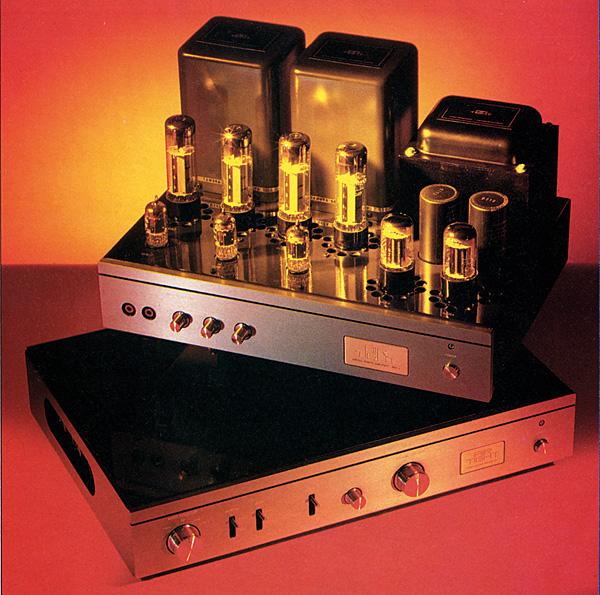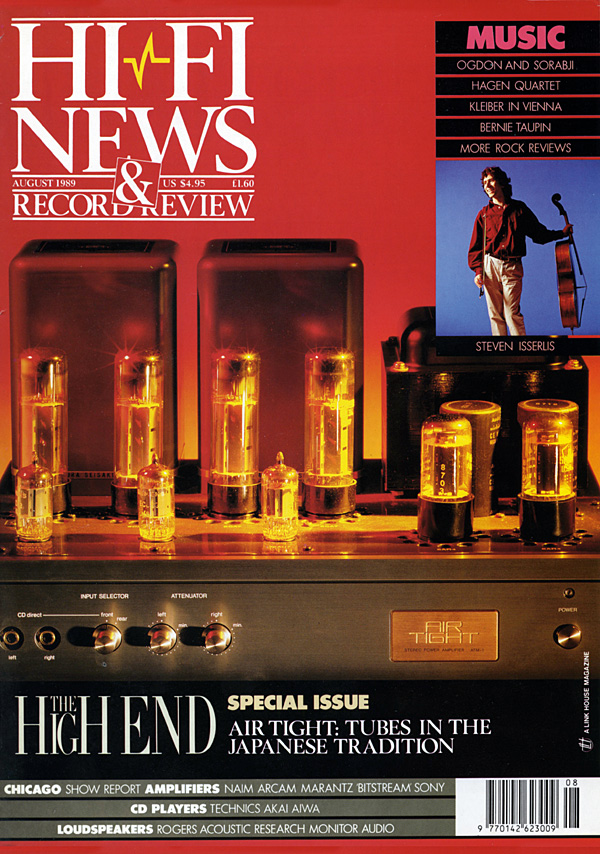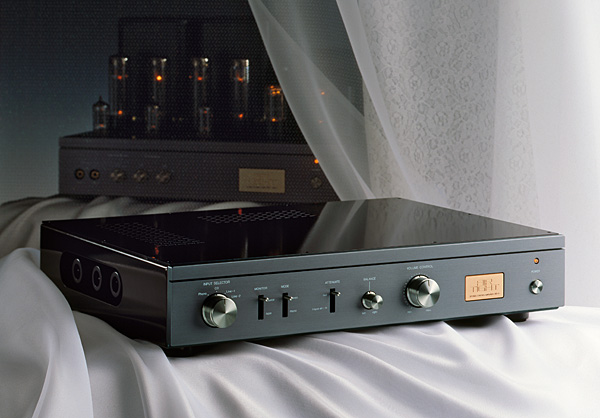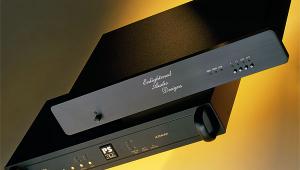Vacuum-packed: the 'Airtight' amplifier

For the past four years, I've been waiting impatiently for a stab at the electronics from Air Tight. I admit that the charm of the name, the absolute perfection of that moniker for a brand of valve amplifiers, caught my attention as much as did the obviously exquisite manufacture. The price, too, appealed, considering that these amplifiers promised peerless construction and attention to detail you just don't find this side west of a Jadis. At last there's a UK importer, so my wait is over.
Air Tight has produced what has to be the audio equivalent of a Fabergé Egg. The ATC-1 Valve Control Amplifier and ATM-1 Valve Power Amplifier contain all of the right ingredients for rampant audio delirium. Common to both units are PCB-free circuits, with everything hard-wired à la Golden Age hardware. The valve bases are ceramic, with gold-plated sockets. The chassis are copper-plated and the gorgeous, grey 'almite treatment' faceplates are machined from 8mm aluminium.
All of the valves are genuine brand-name items, like Siemens and Pentalab rather than whatever-you-can-get throwaways from China. They're the closest things to jewellery that this industry has produced, in terms of finish, appearance and attention to detail. In other words, they've been assembled with a fanaticism you find only in Tokyo or Teheran.

Little Beauties
The preamp is deceptive because it's so petite, measuring only 430x90x325mm (whd). As with Counterpoint and other makers of slimline valve preamps, Air Tight mounts the five 12AX7s (ECC83s) horizontally. And as with Lux, which couldn't resist mounting the valves on the front of its hybrid 'Brid series integrateds, Air Tight mounts three of the little beauties so that they can be seen from the left-hand side of the case. The gorgeous front panel provides source select for phono (MM only), tape monitor, mono/stereo select, attenuate (full muting), balance, volume and on/off, plus an orange tell-tale. The controls are among the smoothest, most luxurious I've experienced.
At the back of the amp, all is gold-plated, with inputs and outputs corresponding to the front controls. but with two extras. In addition to the main outputs there's a spare set for feeding a second power amp and a pair of sockets tagged 'EQ Out'. The latter takes the phono signal from input through its RIAA circuitry and straight out again, for feeding directly into the ATM-1 power amplifier, bypassing every unnecessary switch and stage in the preamp. This can be used in tandem with the standard outputs for some curious purist combinations.
The RIAA circuit itself is based on vintage concepts, just like the PCB-free construction, and consists of a three-stage low-impedance equaliser described as 'once employed by the Marantz 7'. This is the stage fed straight to the 'EQ Out' sockets. The single stage line amp is devoid of tone controls or filter circuits and features a low-impedance cathode follower output. The power supply, meanwhile, employs a solid-state ripple filter circuit for suppressing mains hum and noises.

Despite the size of the enclosure, which would suggest the use of a compact toroidal transformer, Air Tight opted for an EI core type because it provides 'sharper attack of sounds'. The cores are wrapped in silicon steel plate and copper plate to ensure perfect shielding.
As for the power supply, phono and line stages, these are totally independent, the latter two being fully shielded. The chassis was made deliberately heavy to help minimise vibration and component interaction and all tubes are pre-aged and fitted to the aforementioned gold-plated sockets in ceramic bases.
Top Transformers
The ATM-1 power amplifier is based on a Mullard research circuit and employs four 6CA7 output valves from Siemens for a rated output of 36W/channel. To better protect the output pentodes, Air Tight uses paralleled 5AR4 rectifier tubes instead of diodes, improving performance with large currents.
The output transformers, deemed by many current amp builders as harder to find than good tubes, are the highly-rated Tamuras, as used in the Japanese broadcasting industry. Air Tight operates the amplifiers for 100 hours before they're 'retuned' and dispatched. Aside from a valve cracked in transit, these pieces have proven to be the most trouble-free and ghostly silent tube products I've used in recent memory.
The ATM-1 features a bit more than the minimum socketry and on/off switch. Across the front are two sockets and three rotary controls in addition to an on/off button and tell-tale to match the preamp. The sockets accept a CD player straight in, while the first rotary chooses between the front panel inputs and the main inputs at the rear. The other rotaries are left and right volume controls for the source fed in via the front sockets. These sockets bypass certain parts of the amplifier's circuitry, connecting the input directly to the first stage valve.
At the back are the main inputs and the speaker terminals; the arrangement with the front panel 'front/rear' selector allows purists to feed the CD player into the front sockets, with the preamp and therefore the other sources left permanently installed at the back. Naturally, using the preamp in its EQ Out mode for optimum phono playback would require the use of the front sockets, hence the volume controls.























































